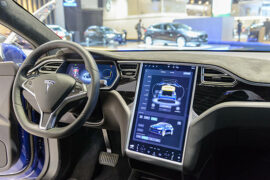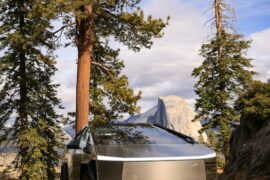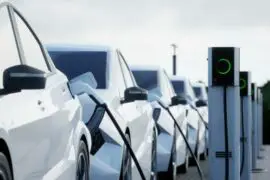Contents
Model y hw4
Hook: Imagine cruising down the highway in your car, the steering wheel turning itself, and the vehicle making split-second decisions to ensure a safe and efficient journey. This isn’t science fiction; it’s the future of driving, and it’s closer than you might think. Model Y HW4, the latest innovation from Tesla, is poised to revolutionize the world of electric vehicles and pave the way for a new era of autonomous driving.
Brief Overview: In the fast-paced world of electric vehicles, Tesla has consistently stood at the forefront of innovation, pushing the boundaries of what’s possible. Model Y HW4 is no exception. This hardware suite represents the cutting edge of technology, with advancements that promise to redefine the driving experience. In this article, we’ll delve into what Model Y HW4 is, why it’s making waves in the automotive industry, and how it’s poised to transform the way we think about the future of transportation.
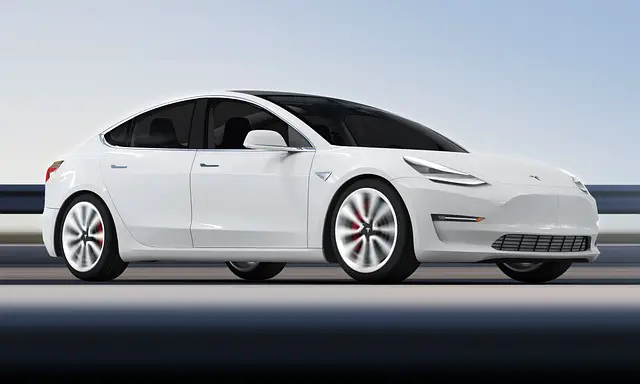
Understanding Model Y HW4
Hardware Upgrades
Model Y HW4 introduces a host of remarkable hardware upgrades that elevate Tesla’s capabilities to new heights. These key components and improvements are pivotal in achieving autonomous driving and enhancing the overall driving experience:
Advanced Sensors: Model Y HW4 is equipped with a sophisticated array of sensors, including radar and ultrasonic sensors, which provide a 360-degree view of the vehicle’s surroundings. These sensors are instrumental in detecting and reacting to objects, obstacles, and road conditions.
High-Resolution Cameras: Cutting-edge cameras capture high-resolution images and video, ensuring an accurate understanding of the vehicle’s environment. These cameras play a central role in Tesla’s approach to self-driving, enhancing object recognition and lane-keeping capabilities.
Enhanced Processing Power: Model Y HW4 boasts significantly upgraded processing power. Advanced onboard computers process vast amounts of data in real time, enabling quicker and more precise decision-making by the vehicle’s autonomous systems.
Neural Networks
At the heart of Model Y HW4 lies a powerful neural network, which is the driving force behind its autonomous capabilities. Neural networks are a form of artificial intelligence that replicates the human brain’s ability to learn and adapt. In the context of Model Y HW4, these networks enhance the vehicle’s autonomous capabilities in the following ways:
Data Processing: The neural network processes data from sensors and cameras, making sense of the vast amount of information generated during a drive. This data includes everything from the position of other vehicles on the road to pedestrian movements and traffic signals.
Real-Time Decision Making: Neural networks analyze and interpret this data in real time, enabling the vehicle to make split-second decisions. It identifies potential obstacles, predicts their movement, and takes appropriate actions to ensure safety and efficiency.
Redundancy and Safety
Safety is paramount in the design of Tesla vehicles, and Model Y HW4 takes this commitment to a new level by incorporating redundancy in its systems:
Redundant Systems: Model Y HW4 includes duplicate hardware and systems, such as sensors and processing units. In the event of a failure or malfunction, the redundant systems seamlessly take over, ensuring that the vehicle continues to operate safely.
Fail-Safe Measures: These redundant systems are equipped with fail-safe measures, meaning they can recognize and react to hardware or software issues, minimizing the risk of accidents and ensuring a high level of safety for both passengers and other road users.
Scalability
Tesla’s forward-thinking approach to Model Y HW4 includes a focus on scalability. This means that the hardware suite is designed not only to improve current vehicles but also to lay the foundation for future enhancements:
Future-Proofing: The scalability of Model Y HW4 ensures that as software and algorithms continue to evolve, Tesla vehicles can tap into the full potential of the hardware, making them increasingly capable of handling complex driving scenarios.
Software Updates: Tesla’s commitment to scalability means that ongoing software updates can harness the hardware’s capabilities, thereby improving the performance and functionality of Model Y HW4-equipped vehicles.
Understanding these critical aspects of Model Y HW4 provides insight into why it’s a game-changer in the automotive industry, setting the stage for the future of autonomous driving.
Impact on Autopilot and Full Self-Driving (FSD)

Improved Autopilot
Model Y HW4 marks a significant leap in the development of Tesla’s Autopilot system. It enhances the system in several keyways, making it more capable and reliable than ever before:
Enhanced Perception: The improved hardware, including advanced sensors and high-resolution cameras, significantly enhances the vehicle’s perception of its environment. This means Autopilot can better recognize and respond to a wider range of objects, from pedestrians and cyclists to road signs and lane markings.
Predictive Capability: The upgraded processing power allows Autopilot to predict the behavior of surrounding vehicles and objects with greater accuracy. This predictive capability is essential for safer lane changes, merges, and navigating complex traffic situations.
Redundancy for Safety: The inclusion of redundant systems in Model Y HW4 offers an added layer of safety for Autopilot. In the rare event of a hardware failure, the backup systems seamlessly take over, ensuring uninterrupted Autopilot functionality and minimizing safety risks.
Smooth Transitions: With the improved neural network, Autopilot can execute smoother and more natural lane changes, turns, and maneuvers. This enhances passenger comfort and confidence in the system’s capabilities.
Towards Full Self-Driving
Model Y HW4 is a pivotal stepping stone in Tesla’s journey towards achieving Full Self-Driving (FSD) capabilities. Here’s how this advanced hardware suite brings us closer to the realization of autonomous driving:
Improved Data Processing: The upgraded processing power and neural network in Model Y HW4 enable FSD to process an immense amount of data with greater efficiency. This is essential for real-time decision-making, especially in complex urban environments.
Complex Traffic Scenarios: FSD is no longer limited to simple highway driving. Model Y HW4 equips Tesla vehicles to navigate complex traffic scenarios, including city streets, intersections, and challenging road conditions. This expands the scope of autonomous driving and brings us closer to everyday self-driving capabilities.
Redundancy for Safety: Safety remains a top priority for FSD, and Model Y HW4’s redundancy features ensure that FSD is more reliable and secure. Fail-safe mechanisms in place enable the vehicle to handle unexpected situations and maintain safety for occupants and pedestrians.
Scalability: Tesla’s commitment to scalability ensures that future software updates will harness the full potential of Model Y HW4. As FSD software continues to evolve and improve, vehicles equipped with Model Y HW4 will benefit from increased autonomy and performance.
Model Y HW4 is a crucial component in the puzzle of autonomous driving, making it increasingly feasible for Tesla vehicles to achieve full self-driving capabilities. While the journey towards fully autonomous vehicles is ongoing, Model Y HW4 is a substantial milestone in this exciting and transformative process.
Challenges and Developments
Challenges Faced
Tesla’s pursuit of full self-driving (FSD) is not without its challenges, and understanding these hurdles is crucial to appreciate the significance of Model Y HW4 in overcoming them:
Complex Urban Environments: One of the significant challenges in achieving FSD is navigating complex urban environments. Crowded city streets, unpredictable pedestrian behavior, and a myriad of road scenarios present considerable obstacles. Model Y HW4 addresses this challenge by improving the vehicle’s perception and decision-making capabilities through advanced hardware and neural networks.
Regulatory Approval: While technology is advancing rapidly, achieving regulatory approval for fully autonomous vehicles remains a formidable challenge. Model Y HW4’s enhanced safety features and redundancy systems are critical in gaining the trust of regulatory authorities. By demonstrating improved safety and reliability, Tesla aims to expedite the regulatory approval process.
Data Collection and Training: Tesla’s self-driving algorithms rely on vast amounts of real-world driving data for training. Gathering and processing this data is a continuous challenge. Model Y HW4’s improved sensors and cameras contribute to more comprehensive data collection, accelerating the development of self-driving algorithms.
Public Perception: Convincing the public about the safety and reliability of autonomous vehicles is another challenge. Model Y HW4’s redundancy and safety features help build confidence by ensuring that the vehicle can handle unexpected situations effectively, ultimately improving public perception of FSD technology.
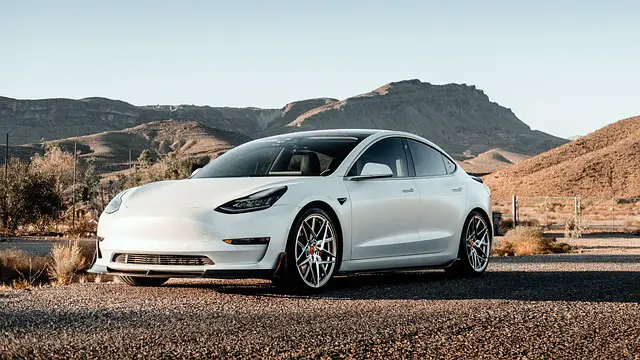
Ongoing Developments
The journey toward full self-driving doesn’t end with Model Y HW4; continuous developments are at the core of Tesla’s mission. Several ongoing advancements and software updates will harness the full potential of Model Y HW4:
Firmware Updates: Tesla regularly releases firmware updates that leverage the enhanced hardware capabilities of Model Y HW4. These updates may include improvements to Autopilot, Full Self-Driving, and advanced features like Navigate on Autopilot and Smart Summon.
Machine Learning and AI: Tesla is continually refining its machine learning and AI algorithms, which play a critical role in autonomous driving. These developments enable the vehicle to learn from real-world data and adapt to new and challenging situations.
Geographic Expansion: Tesla is expanding the geographic areas where FSD capabilities can be used. Ongoing developments focus on making FSD suitable for various road and traffic conditions, bringing autonomy to a broader range of environments.
Driver Feedback: Tesla values driver feedback, which plays a significant role in fine-tuning its autonomous systems. Ongoing developments include features that allow drivers to report issues, provide input, and enhance the overall user experience.
Model Y HW4 is just the beginning of an ongoing journey towards achieving full self-driving. By addressing challenges and staying committed to continuous developments, Tesla aims to make autonomous driving safer and more accessible, ultimately revolutionizing the way we travel on the roads.
The Future of Model Y HW4
Future Prospects
Model Y HW4 represents a pivotal moment not just for Tesla but for the entire automotive industry. As this advanced hardware suite continues to evolve, it holds profound implications for the future of autonomous driving and the automotive landscape as a whole:
Widespread Adoption of Autonomous Driving: Model Y HW4 sets the stage for the widespread adoption of autonomous driving. As Tesla refines its hardware and software, more vehicles on the road will be equipped with the tools necessary for safer and more reliable autonomous operation. This, in turn, will accelerate the acceptance of self-driving vehicles and potentially transform the way people commute.
Urban and Commercial Applications: As Model Y HW4 enables vehicles to navigate complex urban environments, the future will see a broader range of applications. Autonomous taxis and commercial fleets are likely to benefit from this technology, offering convenient, cost-effective transportation solutions in city centers.
Safety and Reduced Accidents: The ongoing development of Model Y HW4 and its hardware redundancy features is expected to make driving significantly safer. With the ability to react to emergencies and mitigate risks more effectively, autonomous vehicles could lead to a substantial reduction in accidents and road fatalities.
Regulatory Evolution: Model Y HW4’s continued advancements will inevitably shape the regulatory landscape. As the technology matures and demonstrates its safety, regulatory authorities may become more receptive to the idea of full self-driving. This evolution in regulations will be crucial for the widespread deployment of autonomous vehicles.
Environmental Impact: Autonomous driving, made possible by hardware like Model Y HW4, has the potential to reduce traffic congestion and enhance traffic flow. This, in turn, can lead to reduced emissions and a positive environmental impact. Fewer cars on the road and more efficient driving patterns can contribute to a cleaner and more sustainable future.
Economic and Industry Transformation: The development and implementation of Model Y HW4 have far-reaching economic implications. This transformation in the automotive industry includes new job opportunities in software development, data analysis, and vehicle maintenance. Moreover, it could lead to significant changes in the way businesses and consumers view transportation costs and mobility.
In conclusion, Model Y HW4 represents a turning point in the journey towards full self-driving capabilities. Its ongoing evolution will play a central role in reshaping the future of transportation, making it more efficient, safer, and environmentally friendly. As the technology matures and regulatory hurdles are overcome, Model Y HW4 will be instrumental in making autonomous driving a reality for people worldwide, forever altering the way we move from point A to point B.
Conclusion
In this article, we’ve embarked on a journey to unravel the significance of Model Y HW4 in the world of electric vehicles and autonomous driving. We’ve covered various aspects of this groundbreaking hardware suite, including its hardware upgrades, neural networks, redundancy, scalability, and the impact on Autopilot and Full Self-Driving (FSD). We’ve explored the challenges that Tesla faces on its path to full self-driving and the ongoing developments that aim to harness Model Y HW4’s full potential.
Final Thoughts
Model Y HW4 is not just a hardware upgrade; it’s a leap into the future of transportation. With its advanced sensors and cameras, powerful processing, and neural networks, it equips Tesla vehicles with the tools they need to navigate the complexities of urban environments and pave the way for a self-driving future.
Its redundancy features ensure safety, even in the face of unexpected challenges, and its scalability allows for ongoing advancements. Tesla’s commitment to continuous software updates and machine learning ensures that Model Y HW4 will only get smarter and more capable over time.
In a world where the quest for autonomous driving is ongoing, Model Y HW4 is a crucial step forward. Its implications extend beyond Tesla, promising safer roads, reduced emissions, and transformative changes in the way we move from one place to another.
As we conclude this exploration, we find ourselves at the precipice of a new era in transportation. Model Y HW4 embodies the cutting edge of technology and sets a new standard for the industry. With ongoing advancements, it’s not just a hardware suite for today but a vision of what tomorrow’s vehicles can achieve, bringing us closer to a world where cars drive themselves, and we redefine the very concept of mobility.


